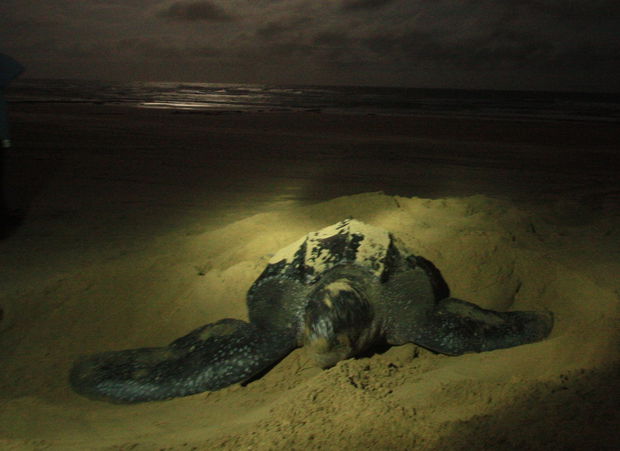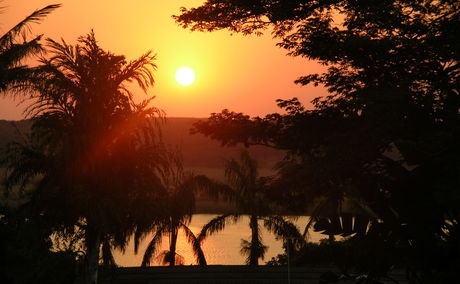There’s something almost otherworldly about arriving in St Lucia. The coastal air carries a mix of salt and forest scent, the streets are shaded by dense tree canopies, and now and then, a hippo might amble lazily down the main road at night as if to remind everyone that this is still their turf. It’s a village where the wild and the relaxed coexist and where international travellers are increasingly finding the...
Starry Nights & Wild Sounds, After Dark in St Lucia

When the golden light of the African sun begins to dip behind the lake and the western horizon, St Lucia begins its nightly transformation. The village itself winds down gently, with locals and visitors heading out for dinner, the occasional flicker of a torch lighting the paths, and the hum of conversation drifting from restaurants. Then, from down the road, the rhythmic beat of Zulu drums begins to rise—deep, earthy, and impossible to ignore. Zulu dancers, dressed in traditional attire, move up and down McKenzie Street, performing proudly outside restaurants, their energy drawing smiles, applause, and wide-eyed wonder. It’s the perfect overture to the wild night that follows, an evening where African culture and untamed nature share the stage.
St Lucia is one of the few places in the world where a person can walk home from a restaurant and cross paths with a hippo. Not in a zoo, not behind a fence, just out there, casually munching grass at the roadside. These enormous creatures spend their days submerged in the estuary waters, and only after dark do they emerge to graze. It’s a bizarre and magical sight, a two-tonne animal with tiny ears and surprising speed, ambling through town like it owns the place. In a way, it does. The locals know to give them space, and visitors quickly learn to carry a flashlight and walk with care.
While hippos take the spotlight, sometimes quite literally in headlights, they’re not the only performers in St Lucia’s nightly theatre. As the town grows quiet, the bush grows bold. From the trees above, the high-pitched cries of bush babies echo, small primates leaping between branches like gymnasts in the dark. From the marshy edges of the estuary, frogs begin their chorus, each species adding its note to the watery symphony. The rustle of unseen movement in the undergrowth keeps the senses sharp. You may not always see what’s out there, but you’ll know it’s there.
Then there’s the sky. Unfiltered by city light or high-rise buildings, the heavens above St Lucia are immense and untouched. On a clear night, the stars reveal themselves in staggering clarity. The Milky Way stretches across the sky like a river of light, and constellations such as the Southern Cross and Orion hold their timeless positions above the palms. In the cooler winter months, the air is crisp and dry, making the stargazing even more spectacular. Whether you're walking back from dinner or sitting quietly on a deck, it's hard not to look up and feel humbled.
For those who want to go beyond passive observation, St Lucia offers a few truly wild nighttime adventures. One of the most thrilling is a guided night safari in the iSimangaliso Wetland Park. Setting off in an open vehicle, a spotlight sweeps across the bush in search of eyes glowing in the dark, genets darting through the grass, chameleons clinging to branches, owls in silent flight, and if you’re very lucky, a leopard slipping like smoke through the shadows. The park at night is a different world, quieter but no less alive.
Then, during the warmer months from November to March, something extraordinary happens on the remote beaches north of St Lucia. Under the cover of night, ancient giants return to land. Loggerhead and leatherback turtles, some weighing hundreds of kilograms, haul themselves up the sand to lay their eggs. Witnessing this slow, instinctive ritual under a star-filled sky is one of the most moving wildlife encounters on earth. These guided turtle tours are strictly regulated to protect the animals, and each step on the sand feels like a step back in time.
Of course, not every adventure needs to run deep into the night. One of the most peaceful ways to end the day is with a sunset cruise on the estuary. As the sky melts into orange and purple, the water becomes a mirror, and hippos begin to stir. Crocodiles sunning on the banks ease into the water, and fish eagles call out from the treetops. It’s a calm, reflective moment, a perfect transition from the bold light of day into the quiet energy of night.
In St Lucia, nightfall doesn’t mark the end of the day, it signals the start of something else entirely. A time when the ordinary gives way to the extraordinary. Where stars shine brighter, sounds travel farther, and the boundary between people and wilderness becomes deliciously thin. Here, the wild doesn’t sleep, it simply changes rhythm.
So when you next visit this remarkable corner of South Africa, let the night draw you in. Look up. Listen closely. Walk slowly. And remember, the story of St Lucia doesn’t end when the sun goes down. It’s just getting started.
Further Reading
When guests arrive at Lidiko Lodge, many pause to take in the moment — the scent of the tropical gardens, the rustle of palm leaves, and the calls of birds drifting through the coastal air. It is often described as the instant when the journey melts away and a feeling of belonging takes its place. For years, this sense of arrival has been at the heart of what makes a stay at...
Long before St Lucia became a beloved holiday haven and a gateway to hippos and humpback whales, it was a place steeped in mystery, exploration, and legend. The history of this remarkable corner of KwaZulu-Natal is as colourful as the sunsets over the estuary, filled with tales of early explorers, Zulu kings, shipwrecks, and stories passed down through generations.





Share This Post